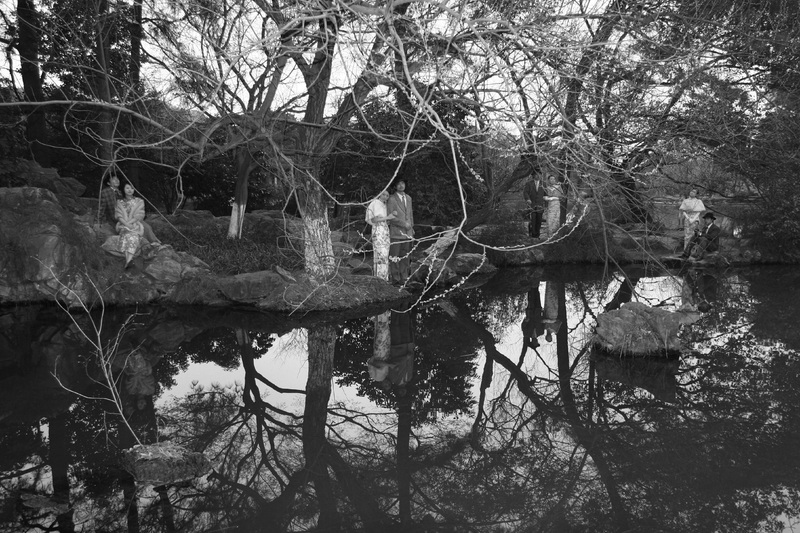19 Dec 2018
Events
HIAP Talks: Yang Fudong
Yang Fudong (b. 1971) is one of the preeminent artists of our era, stretching and embedding in the format of film and installation the surface of the moving image in a three-dimensional study of space. For HIAP Talks on Thursday 29 September, 2011 at 6 pm he will screen a selection of rarely-seen early and very recent works. This will be followed by a discussion with the artist. This special event is timed to coincide with Yang Fudong’s exhibition Utopia and Reality at EMMA – Espoo Museum of Modern Art.
Still in art school in 1993, Yang Fudong began work on the Stranger Project, for which the starting point was not to talk to anyone for three months, except in written form. This almost led to the termination of his studies, which did not prohibit Yang becoming even more extreme in The Perfect Format of Art. In 1997 he began work on his first feature film Estranged Paradise. He could not bring this project to a conclusion for many reasons, having to find a job and join ordinary society, be realistic about living and art-making. This was until 2001, when Back Yard gained him the attention of gallerists and curators. This included Okwui Enwezor, who began to support his projects making it possible for Yang to finalize Estranged Paradise, which Enwezor showed at Documenta XI in 2002. He continued work with the remarkable series Seven Intellectuals in Bamboo Forest, made in the period from 2004 to 2007, when it was finally shown at the Venice Biennale. In a sculptural turn in 2009, Yang Fudong tried to bring film into three-dimensional space with Dawn Mist, Separation Faith, which he first made and exhibited in Shanghai, where he currently resides.
Parts of the classic series Seven Intellectuals in Bamboo Forest and East of Que Village (2007) are being shown at EMMA from September 28, 2011 – January 8, 2012.
The HIAP Talks screening on 29 September at 6 pm will include material from early and recent, rarely-seen works:
1/ Backyard – Hey! Sun is Rising (13’). This work was finished in 2001, before Estranged Paradise which he had started in 1997 and finalized for Documenta in 2002. Backyard shows the aesthetic development and struggle of the artist, stepping from the memory of Hangzhou into the reality and hyper-reality of Shanghai. The work is not only artistically important, it also shows the fashion and cityscape of Shanghai in 2001.
2/ Dawn Mist, Separation Faith of 2009 was Yang Fudong’s solo exhibition at the Zendai MOMA, Shanghai, curated by Li Zhenhua. This was the first time the artist used 35mm-film and film projectors in his installations. In this work, nine channels displayed a selection of artist’s impressions of classical moments, including scenes from Kungfu to romance. The audience could navigate within the installation to link together the nine parts, turning each physical movement into a moment of a new film.
3/ One Half of August (2011). This work was newly made for the exhibition The Moving Image in China 1988–2011 at the Minsheng Art Museum, Shanghai. Once more, it focusses on the artist’s inside story, which he tells through a reworking of his most important series of films, Seven Intellectuals in Bamboo Forest, projecting it onto the surface of sculptural or architectural space as an 8-channel piece. Creating a new sense of space and time with this method, Yang attempts to re-initiate dialogue with his own works, bringing them to a new state of perfection through installation.
Yang Fudong’s HIAP Talk is curated by Li Zhenhua, Ivor Stodolsky and Marita Muukkonen.
This HIAP Talk is part of HIAP’s Urban Studies programme between Helsinki and Shanghai.
The Talk is organised in collaboration with EMMA – Espoo Museum of Modern Art. Fudong’s exhibition will open in EMMA on Wednesday, September 28 presenting four Fudong video installations – East of Que Village (2007) and three parts of the Seven Intellectuals in Bamboo Forest series (2005–2007).
Picture: From the series Seven Intellectuals in Bamboo Forest. Courtesy of Yang Fudong, ShanghART Gallery and Marian Goodman Gallery.

